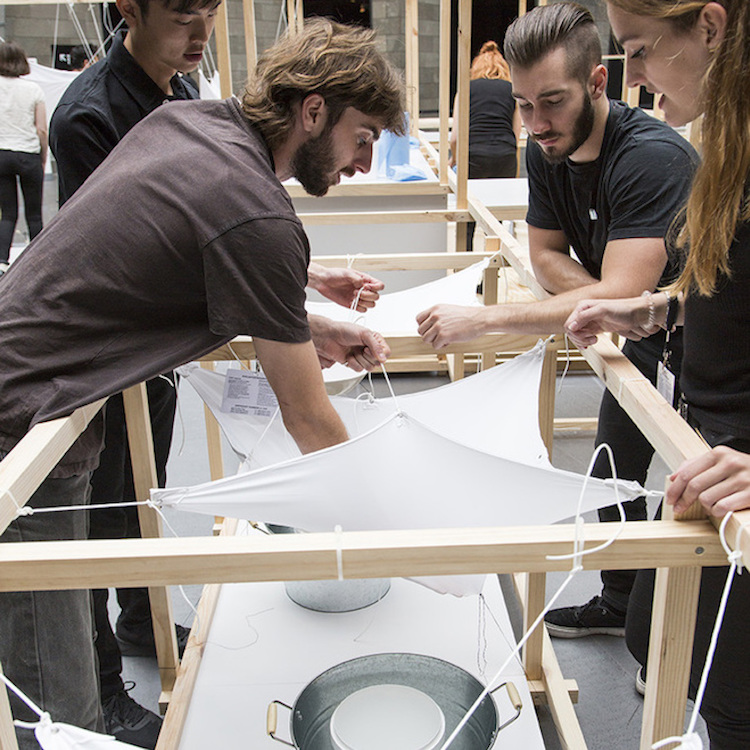MELBOURNE — Chilean design studio Great Things to People (gt2P) debuted their Catenary Pottery Printer which explores the boundaries between digital and analog machines.
Throughout the inaugural Melbourne Design Week (March 16 – 26, 2017), local designers and students used the pottery printer to create their own custom works. The project yielded non-standard forms revealing an almost computer-like statistical algorithm for variable creation, ArchDaily writes.
Despite its technological undercurrents, gt2P’s printer operates through a low-tech system, using a fabric sling suspended at adjustable intervals to mold liquid clay into beautiful vessels. As ceramic slips, drains, and dries, one-of-a-kind objects are created.
See the Catenary Potter Printer in action:
The project was developed in collaboration with staff and students from the RMIT University School of Architecture and Design, and displayed under the Federation Court atrium at the National Gallery of Victoria.
About gt2p: The architecture and design studio incorporates digital crafting as an approach that brings together the know-how of Chilean artisans and the digital technologies in design and manufacture. We create DNA to generate families of products. Through these generative algorithms or “DNA”, we develop products and projects in both personalized and massive ways.
Read more about the team’s process (on a smaller scale) here.
Do you love or loathe this technological ‘machine’ from the worlds of contemporary ceramic art and contemporary ceramics? Share your thoughts in the comments.







I’m thoroughly confused! This is an old technique. I don’t understand where the “digital” part comes into play–unless they’re making a pun (fingers are digits). Are they being sarcastic? “Ironic”? (Do you have a link that better explains the verbiage about “We create DNA to generate families of products. Through these generative algorithms or ‘DNA’, we develop products and projects in both personalized and massive ways.”)
Yes, Czeiss. You’re correct. It is a playful pun, which also plays with the team using the verbiage printer, which can be both analog and signal driven. As for the quote you’re referencing, you can find further explanation of the team’s process (on a smaller scale) here: http://www.gt2p.com/Less-CPP-N-1. Thank you for reading!
Studio slipcasters have been experimenting with methods like this for years. I can think of two people teaching about it at ANU while I was there. It’s low tech fun exploiting the qualities of the clay material.
Only love it it I can’t see the machine